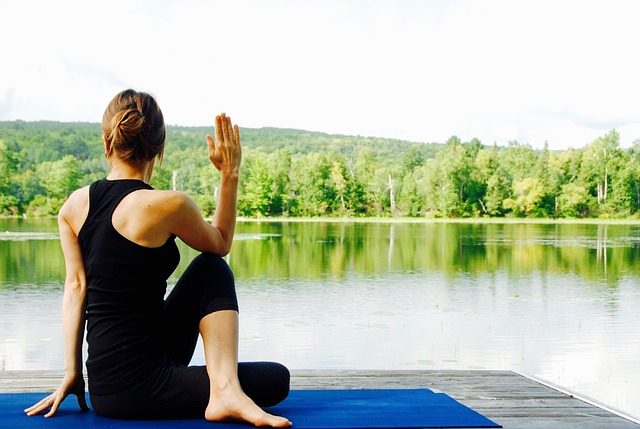Yoga has long been considered a part of the proper health and wellness routine for people practicing traditional Indian medicine and health coaching. The idea that yoga – or at least the kind of yoga that involves holding positions and controlling breathing – is an essential part of health comes from the spiritualistic notion that there are nexuses for the different desires and forces of the body, and that proper control over the body is in some way connected to control over oneself physically and spiritually, also.
For many of us, the effects and benefits of yoga are infinitely more practical and scientifically-evinced. Yoga is a great way to train some of the less-popular aspects of health and physical wellbeing from flexibility to motor control and quality of breathing. Yoga works all the physical attributes that are essential to effective movement and physical health but aren’t as glamorous as sprints or weight training or shredded abs. If you’re looking for healthy aging and a balanced lifestyle, this is a great place to start.
Flexibility
If you know anything about yoga, it’s probably that it’s going to improve your flexibility – we all consider the most advanced yoga practitioners to be those who are able to perform crazy bending and balancing movements. Flexibility has become associated with femininity for some reason (especially since men tend to have less of it and thus need more flexibility training), but it is an essential part of the maintenance of muscles, joints, and overall wellbeing – especially for those looking to age healthily with an active lifestyle.
Flexibility and mobility of the joints are tied to huge health benefits in the long run, from avoiding joint injury and impingement to preventing tears and injuries by increasing the healthy range of movement. Consider the health of the shoulder – dislocations and injuries occur when we reach dangerous joint angles, but increased mobility simply refers to the reduced “danger” of these joint angles.
Balance
Balance, like flexibility, is only really considered when we look at the top applications of this essential athletic ability. We might find ourselves stunned by the balance and poise of artistic gymnasts, but the balance is important to everyone – especially as we reach an advanced age. For the elderly, balance is an essential physical attribute due to their increased risk of falls and the associated fractures. This can initiate a long cycle of injury and reinjury, whilst reducing general mobility and general quality of life.
Balance training in yoga is mostly isometric – it requires you to hold weird positions – so in this sense, it is not as effective as other forms of balance training that develop dynamic balance. However, because of this simplicity, Yoga is far more accessible and effective for those who are not experienced in athletics or serious training. This makes yoga an amazing place to start for those who wish to develop balance but are novices to physical training, especially in advanced age.
Breathing control
The control of one’s breath is a significant part of Yoga and should not be overlooked as a tool for improving health and wellbeing. Controlling the balance of breathing and the ability to actively use the diaphragm has a variety of applications through life. Firstly, effective breathing is an essential part of energy metabolism as the oxygen we breathe is used to fuel the oxidative energy pathways that regulate slow-twitch movements like walking.
Additionally, control of the breathing has been linked to various promising health markers from heart health to core temperature regulation and energy balance. The importance of effective breathing has yet to be met with a great deal of scientific research but increasingly takes the spotlight in discussions of maximum human performance, both mental and physical.
Active relaxation
One of the most important aspects of Yoga – and one for which it has been widely revered for decades – is the rare focus on relaxing rather than performing. With other health, fitness and sports activities we find ourselves constantly attempting to be more prepared, more focused and generally more anxious. This is a theme for life in the English-speaking world more generally, but the chronic stress and “hype” is bad for mental health and can contribute to a number of stress-based conditions such as heart attack.
Yoga, by contrast, aims to relax the body and mind to provide a system of poses, breathing, and environment that fosters peace and internal calm. Whilst it would be easy to revert to the spiritualism we discussed at the outset, these are scientifically-verified benefits that have been shown to correlate with improves physical and mental health. The fact is that yoga may seem like it is artistic or spiritual, but its health benefits are inherently practical and give you the opportunity to change tack and focus on other aspects of your health and fitness.
Summary
Not only is yoga a fantastic tool for developing flexibility, balance, and breath-control, but serves to facilitate a calmer mind and healthier hormonal system. The gentle, but deliberate, movements and poses found in yoga are a great way to improve the less glamorous aspects of athletic/fitness performance whilst providing additional benefits. By reducing various forms of stress and anxiety, yoga and other forms of active relaxation or structured stretching provide the body and brain with a much-needed break from the constant up-shifting seen in athletes and businesspeople.
Overall, we recommend yoga to absolutely everyone but want to highlight the particular benefits that it can provide to those who practice regular strength or endurance training, and those who wish to grow old in a healthier, more mobile way. Healthy aging is a key concern for many of us and a healthy routine of diet and exercise will be complimented massively by yoga and other forms of active relaxation, stretching and breathing control.

